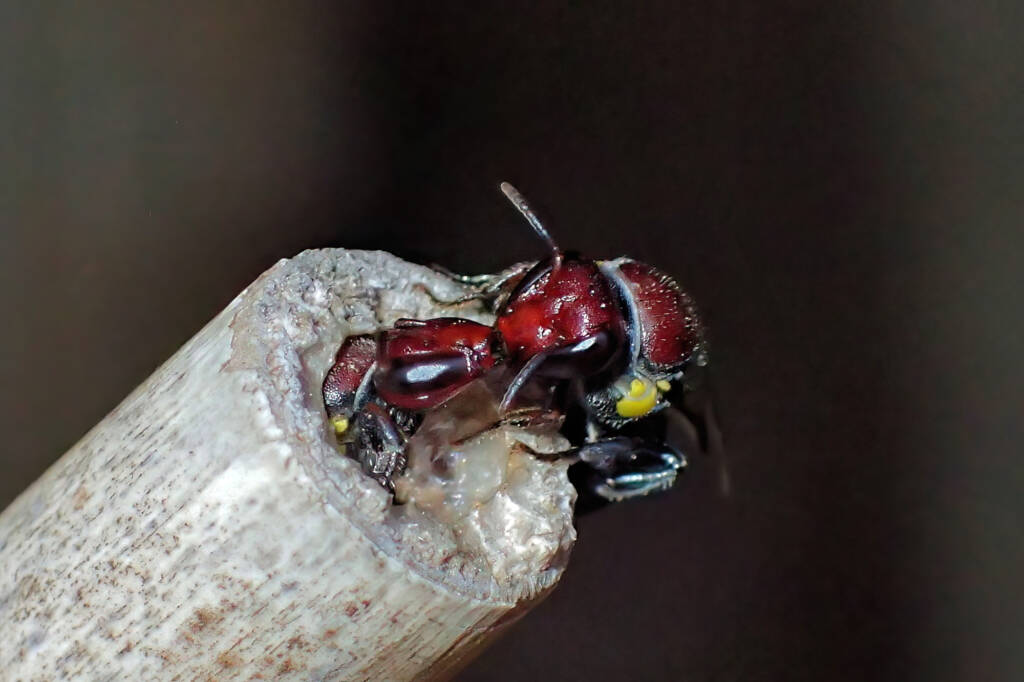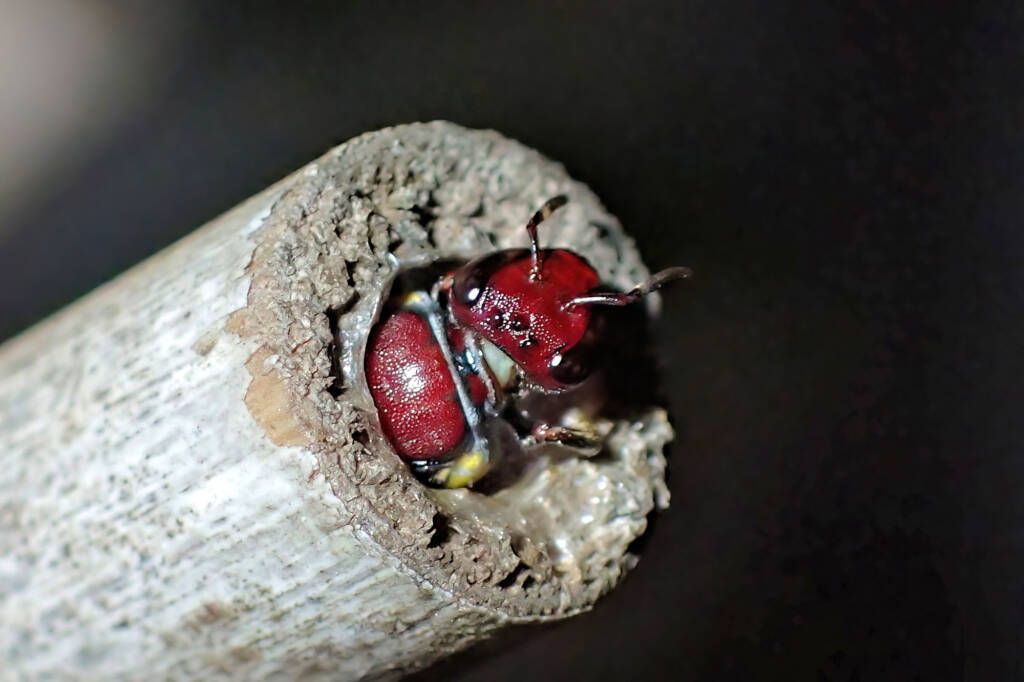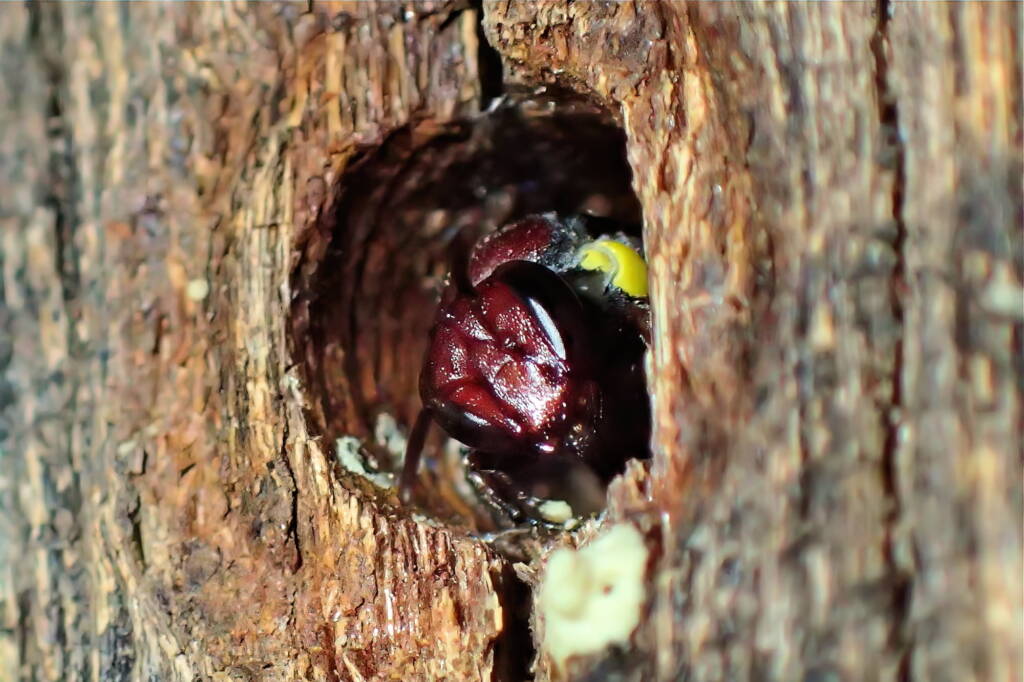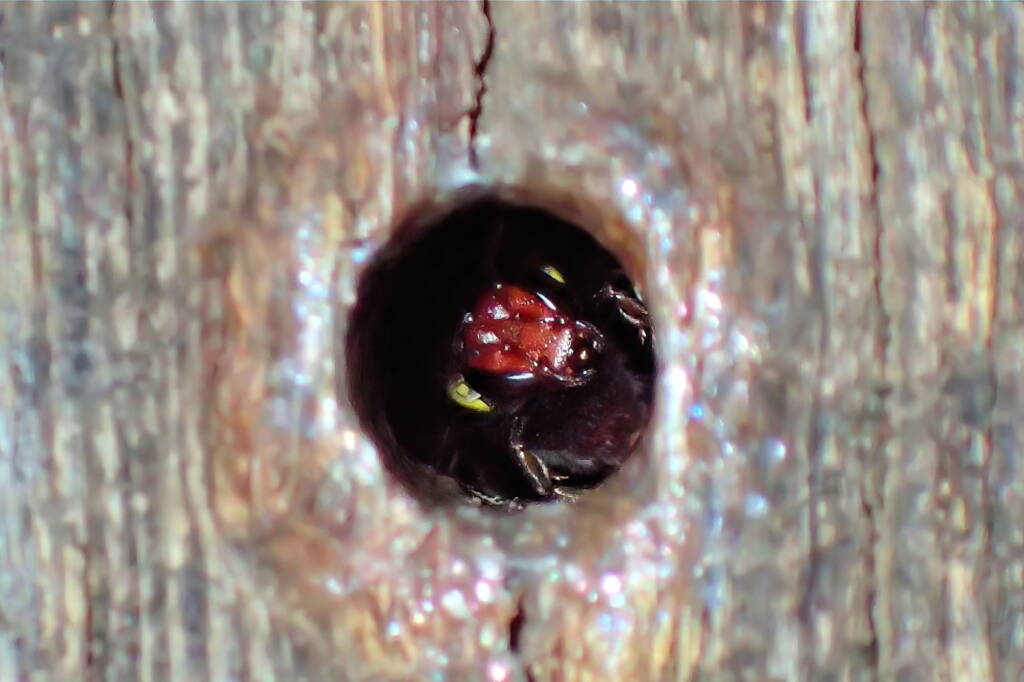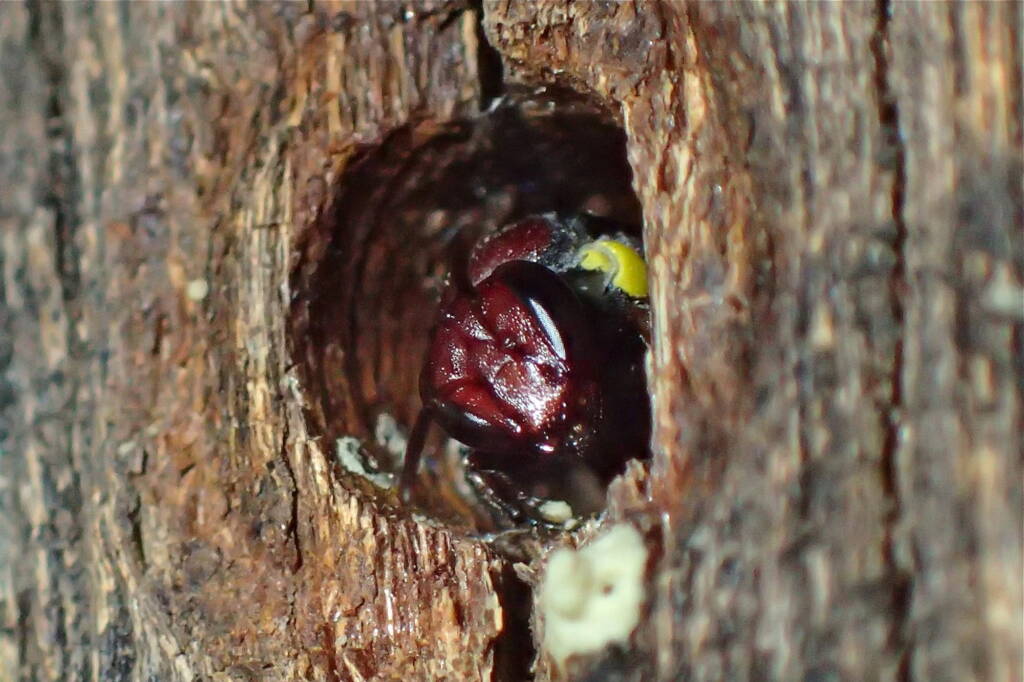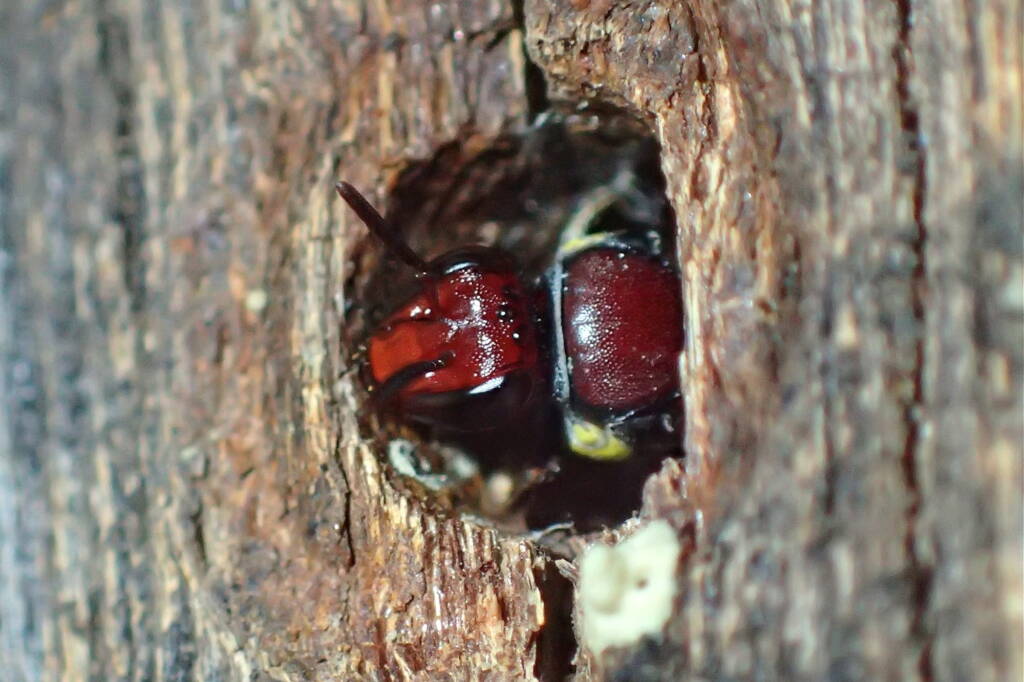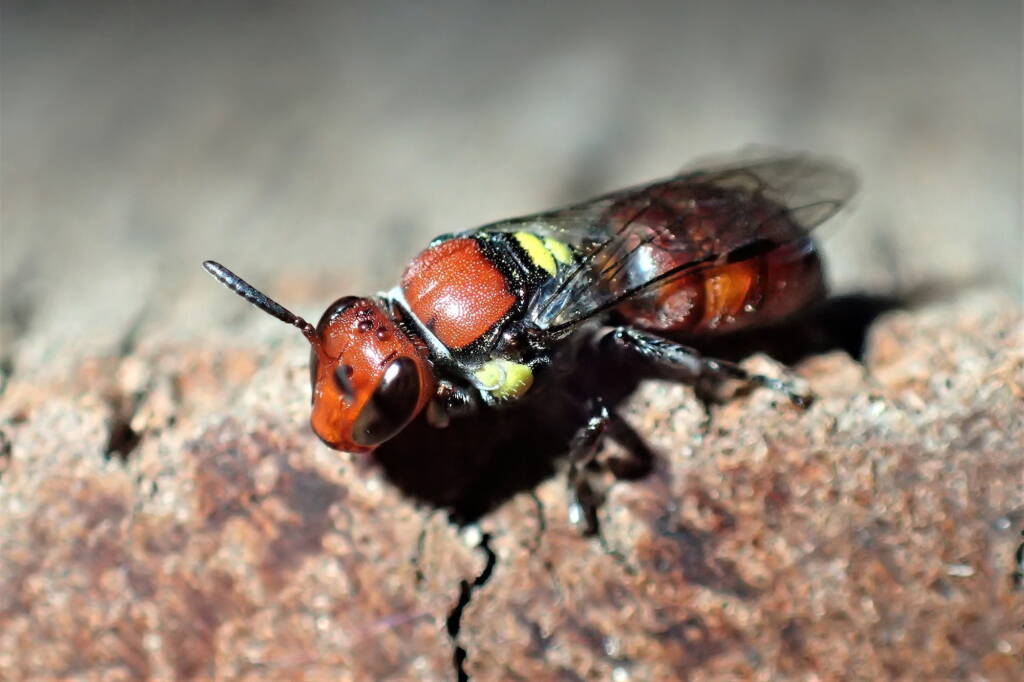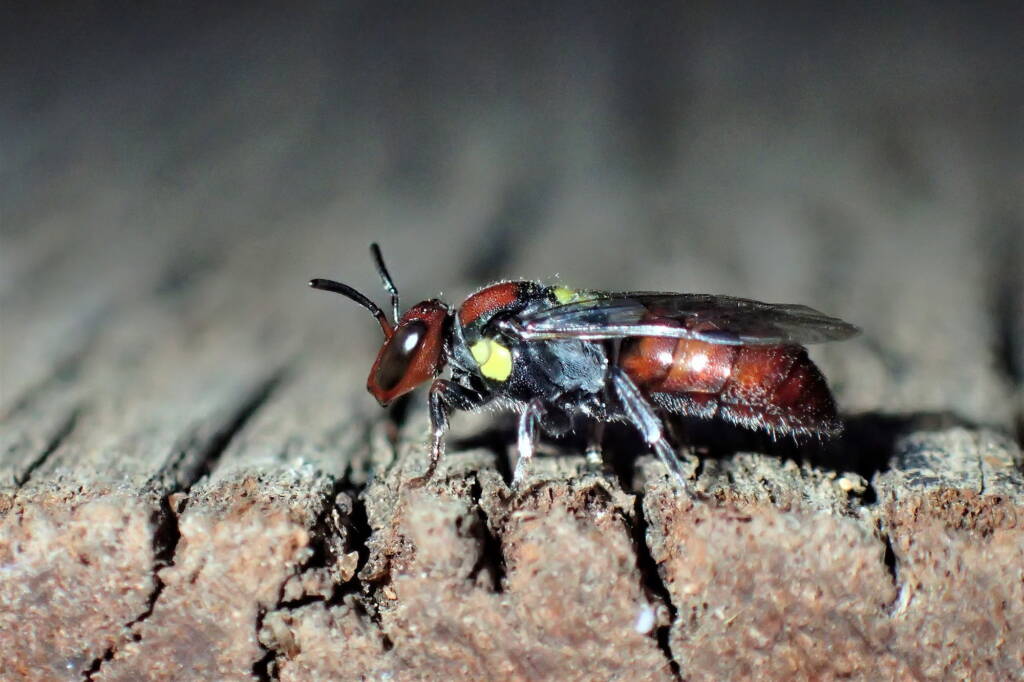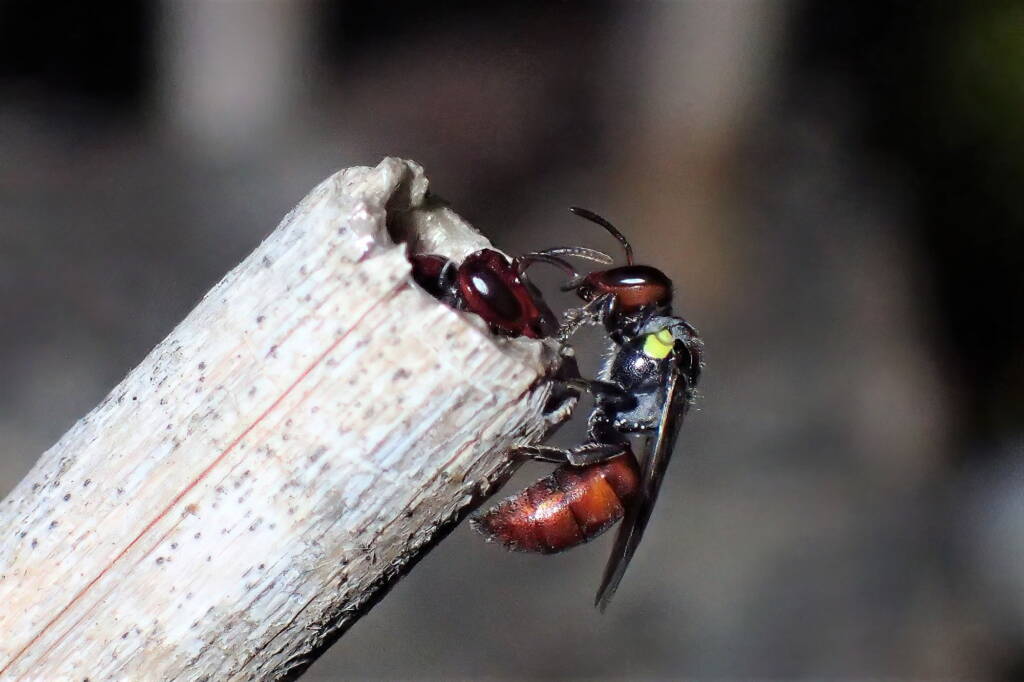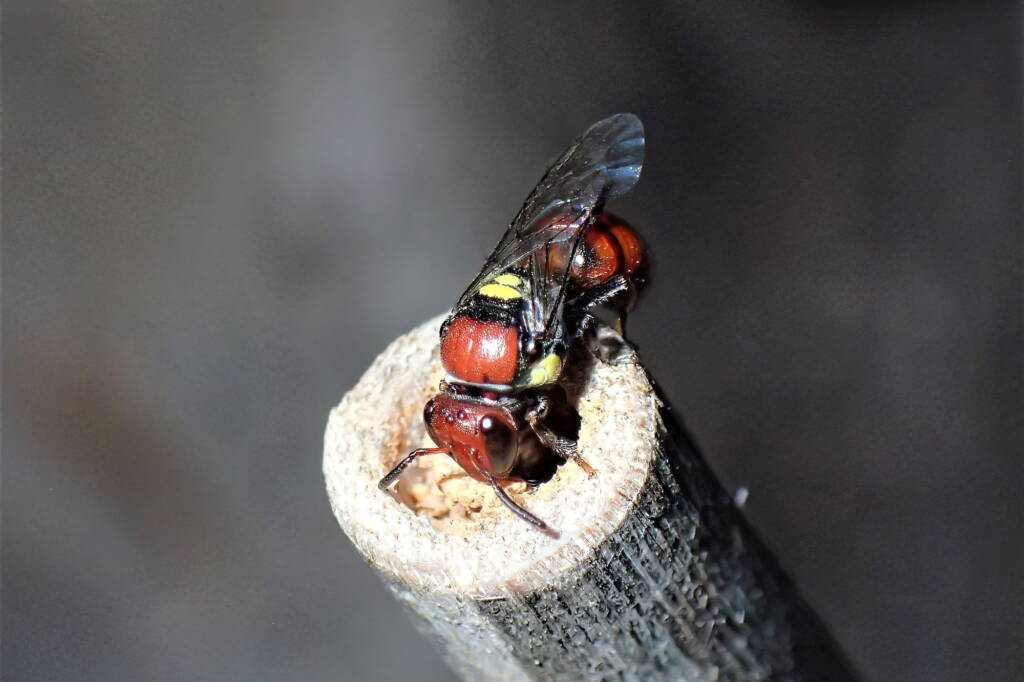Meroglossa rubricataBubbling Meroglossa rubricata Colour Variation Communication Female and Male Flower Selection Nesting Threats
Images and Contributor Author Gary Taylor ◦
The nesting habits of Meroglossa rubricata is certain interesting to witness, especially if you have them nesting in your “bee hotel”, or if like mine, it has grown large enough to earn the title of “BeeTown”.
Whilst known as solitary bee, they are far from that, as they are known to share the nests, in co-habitation arrangements, males with males, females with females, and male and female. What an interesting picture that paints… no doubt many keen bee hotel owners can attest to this co-habitation arrangements. There is even a consideration that they hang around to raise their young.
Whilst the minimum hole size may be 4 mm diameter, in every example of selection of nests for pre-drilled holes, the Meroglossa rubricata has chosen a 6 mm hole. An interesting observation by “citizen scientists” at their “bee hotel”. This makes sense, when cohabitating, as the bee likes to be able to turn around inside the hole to let the other bee out.
I’ve got a couple dozen Meroglossa rubricata nesting in my BeeTown and they’re not like other native bees. They don’t emerge from a sealed nest, spend four weeks working their guts out from sun up to sun down furiously filling chambers, packin’ ’em with pollen and capping them off before dying… They just seem to be there all year ’round, so I get to watch them a lot…
Author Gary Taylor
The Meroglossa rubricata that was lining and building up the entrance to her nest a day or so back, I wondered at the time if it was to soften the rough texture of the bamboo, or perhaps (as she seemed to be making the entrance smaller) it was to make it a bit cosier now that we’re getting cooler nights… It would also make it harder for tiny parasitic wasps to sneak in too, you can see how snuggly it fits her in the first pic…
Or perhaps it was because she was having friends over for a house warming party and wanted to make a good impression… The first pic shows the almost affectionate greeting of the first bee friend to arrive. The host has her antennae (which are great indicators when reading their body language) folded right back over her head as she reaches up to the newcomer and I had to wonder if this was just a regular greeting smooch or if she is perhaps receiving a gift of nectar from her new guest… And if she did, perhaps it wasn’t a gift so much as a map, telling her which flowering tree the others were hanging out at, because right after this pic the host flew off and the guest made herself at home.
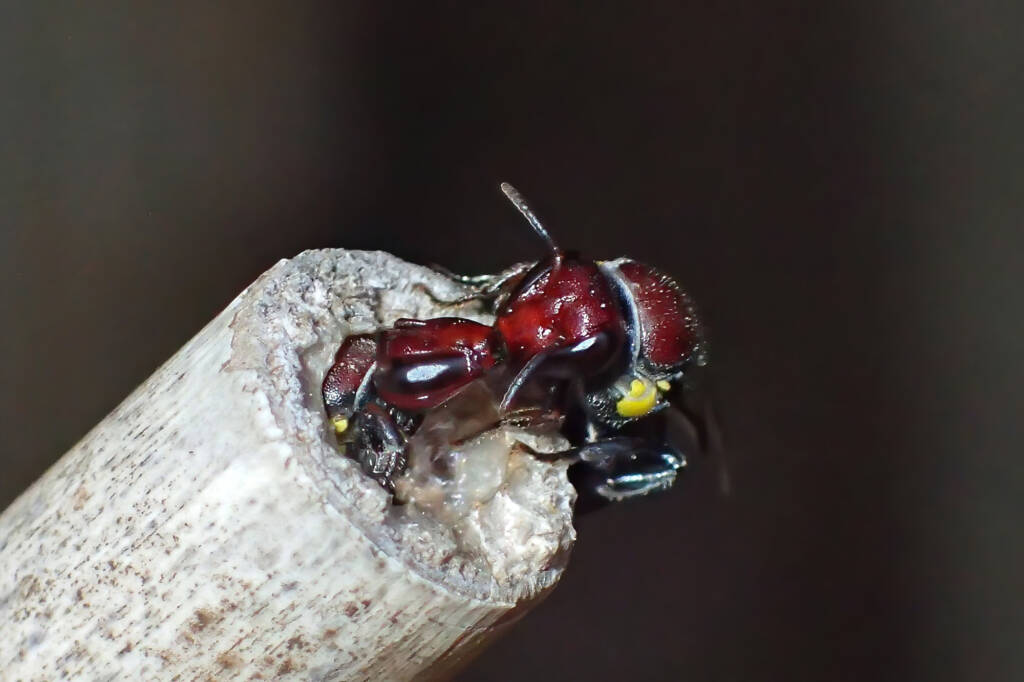
Minutes later, the host returned with a couple more friends following behind and popped inside to tell the first guest the others had arrived. That’s her bum still in the entrance in the second pic as the latest friend to arrive lands on the one just landed. At first I thought maybe it was a hens party and they’d organised a stripper, but no the one that landed on the other was female too, the stripper must be coming later. I think she was just in a hurry to get in, maybe drank a little too much nectar and needed to use the bathroom…
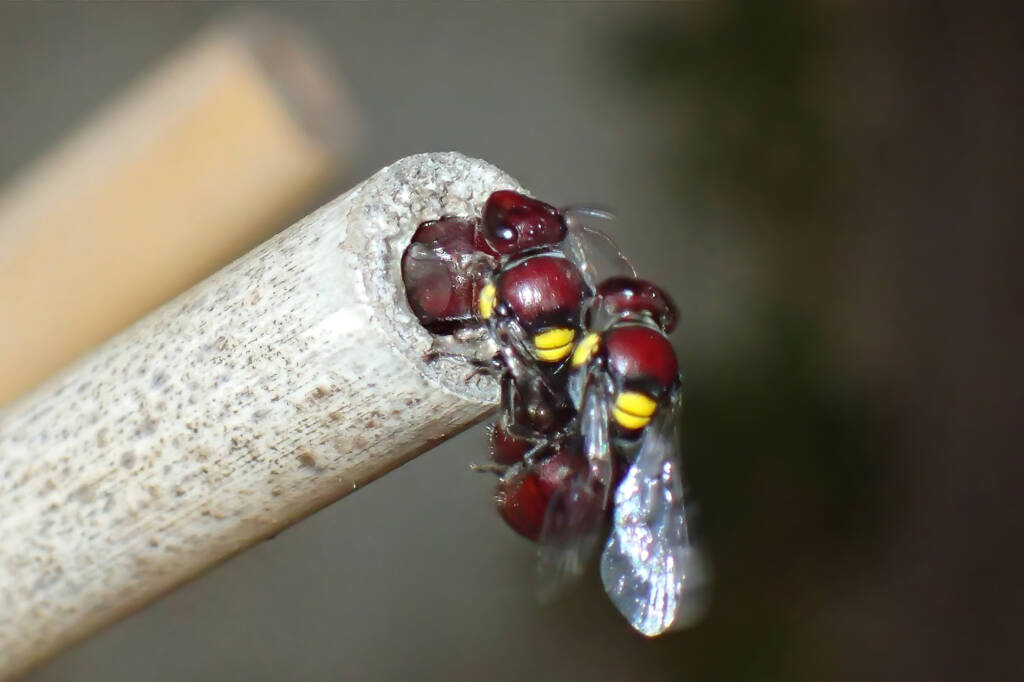
Dunno for sure but in the third pic, standing at the entrance still trying to get in, the girl she landed on now has one foot pressed against her face and another on her side holding her back, “I was here first, you can wait in line!..” Maybee the stripper had already arrived? I guess I’ll never know, but it was good to see them get together, I hope they had a good night.
Author Gary Taylor
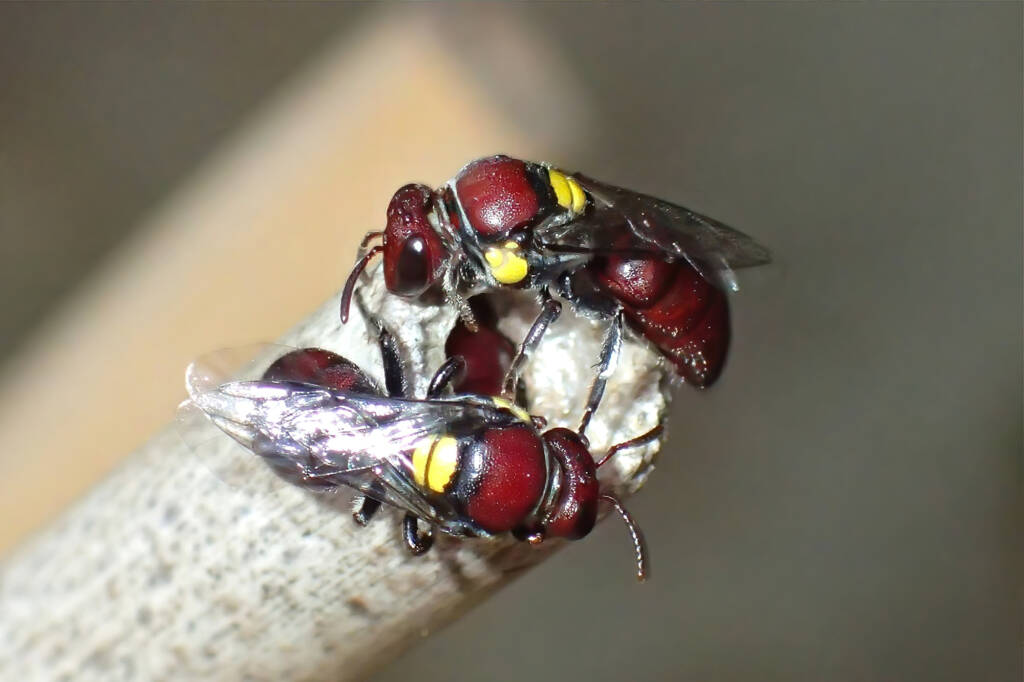
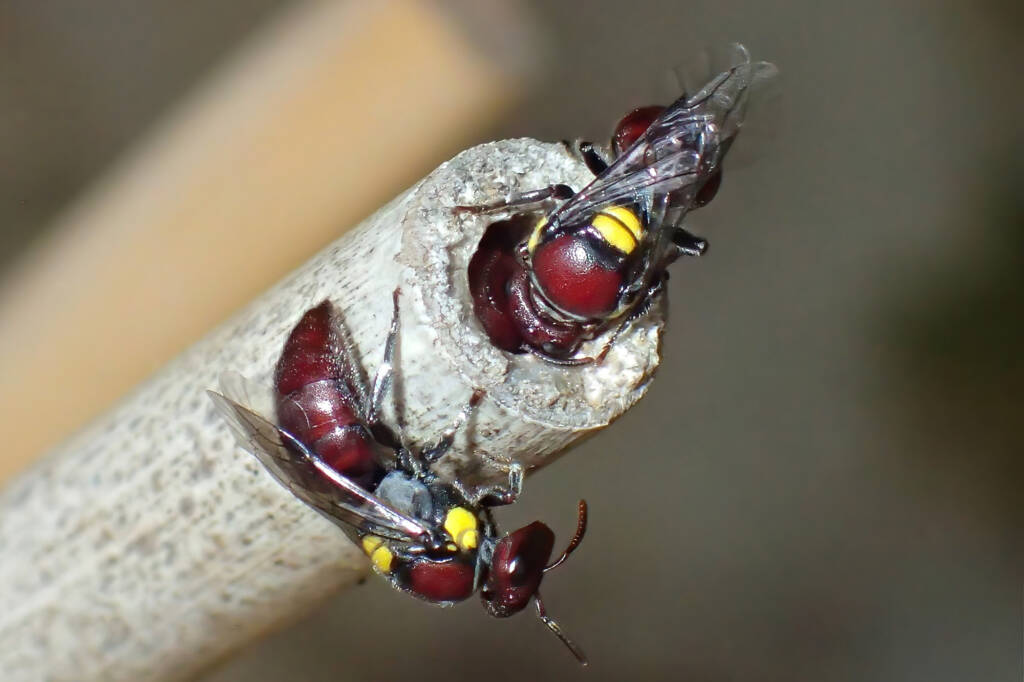
- Scientific classification
- Kingdom: Animalia
- Phylum: Arthropoda
- Subphylum: Hexapoda
- Class: Insecta
- Informal: Pterygotes
- Order: Hymenoptera
- Superfamily: Apoidea
- Informal: Apiformes
- Family: Colletidae
- Subfamily: Hylaeinae
- Genus: Meroglossa
- Species: M rubricata
- Binomial name: Meroglossa rubricata
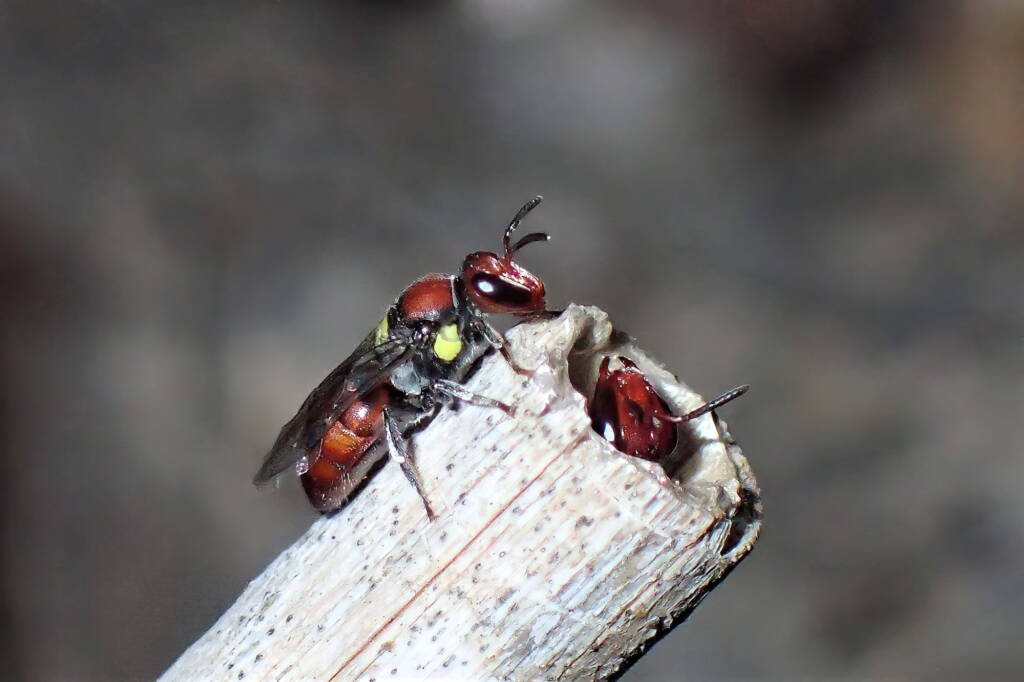
Footnote & References
- Photographs and content contributor © Gary Taylor
Meroglossa rubricataBubbling Meroglossa rubricata Colour Variation Communication Female and Male Flower Selection Nesting Threats
MeroglossaMeroglossa impressifrons Meroglossa rubricata
BeesBees Anatomy Bee Behaviour Blogging Bees… Bees – image index Amegilla Bee Apis mellifera Austroplebeia australis Austrothurgus Braunsapis sp Ceylalictus perditellus Colletidae Euryglossinae Exoneura Homalictus Hyleoides bivulnerata Lasioglossum Lasioglossum (Chilalictus) Lipotriches Megachile Meroglossa Stenotritidae Tetragonula Thyreus Xylocopa

